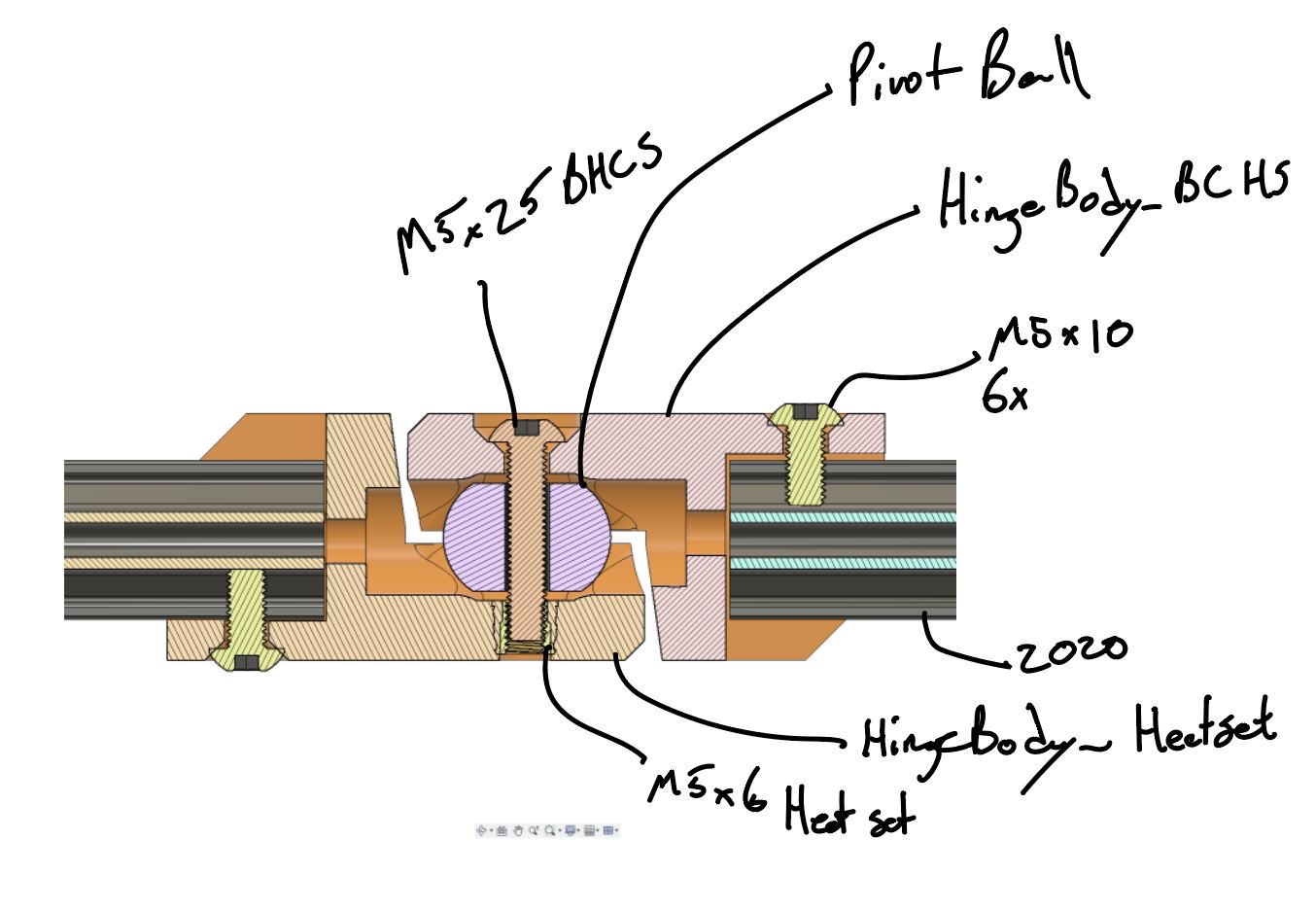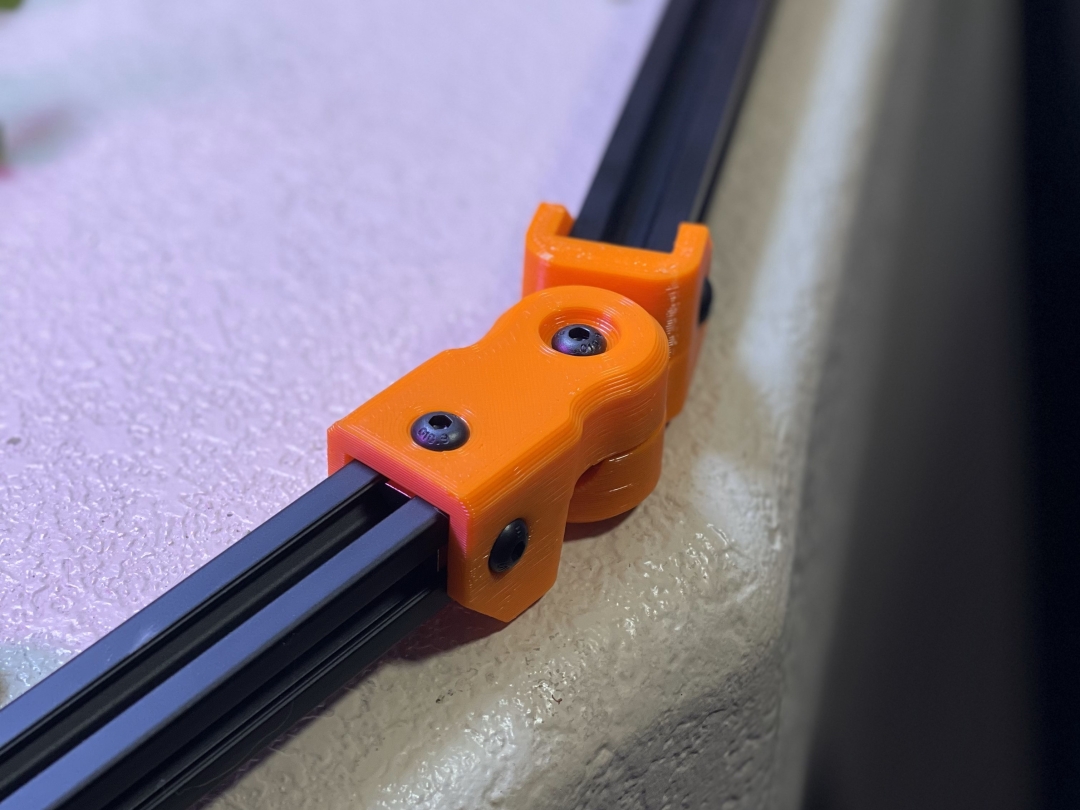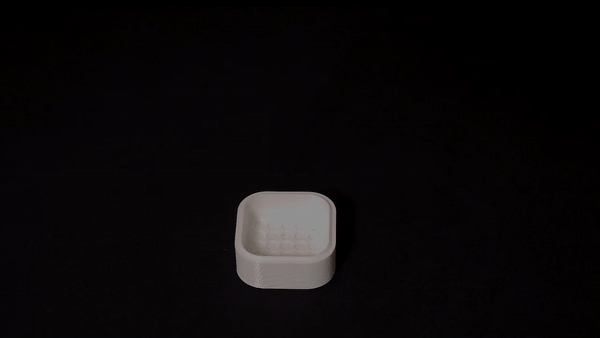BubsBuilds Projects
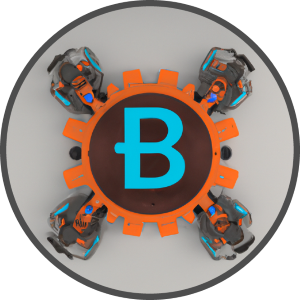
- Details
- Parent Category: BubsBuilds Projects
- Category: Tool-related Projects

I had some extra linear rods and bearings around, and found the straightness of my heat setting skills lacking. So I tossed this guy together and have putting it to pretty steady use for the last few months. Figured if it’s proving handy for me, might as well share it.
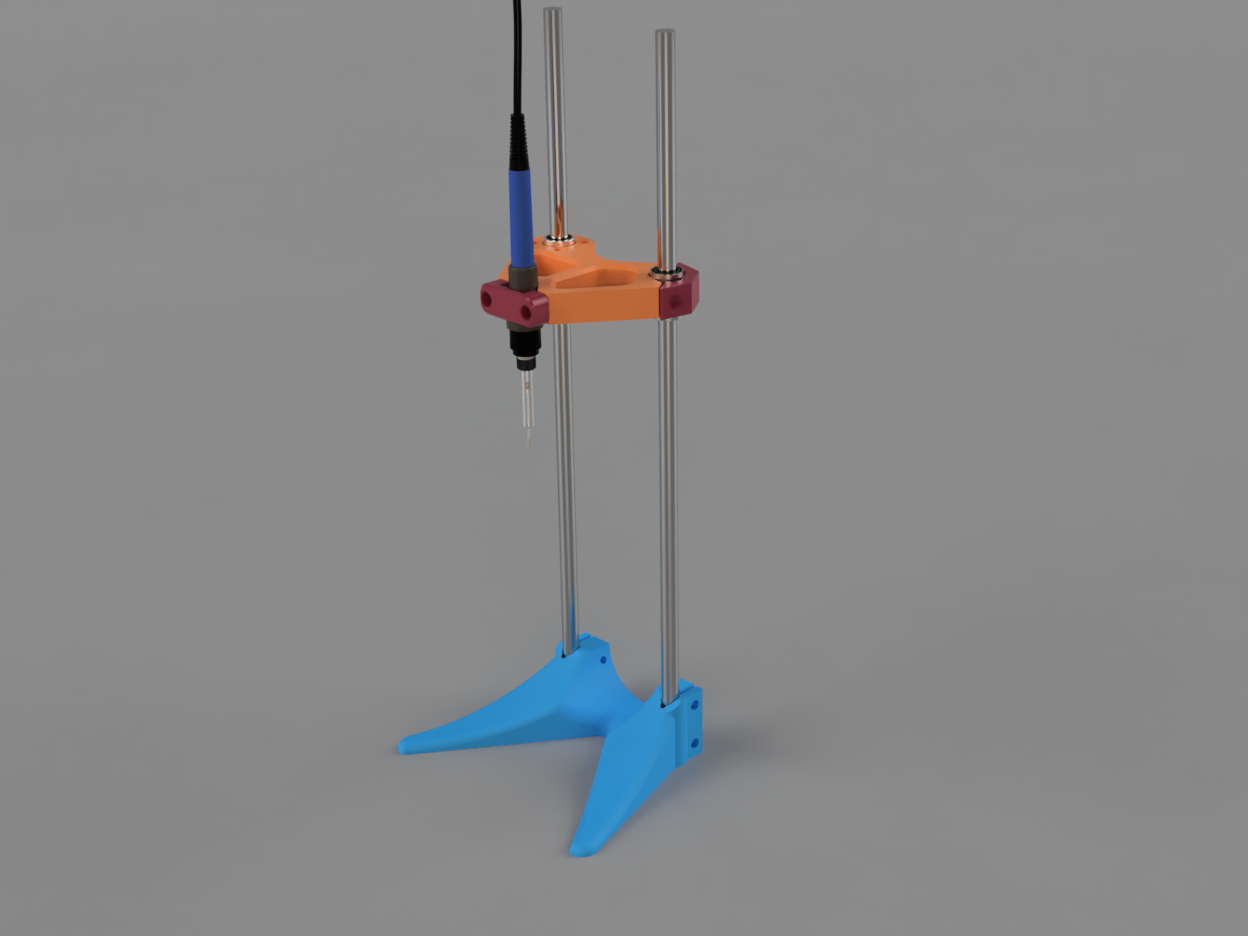
I originally designed the clamp for use with my Hakko FX888, and more recently have been using it with my old Weller WES51. If your handle is too small, you could wrap it in some high-temp silicone.
- Printed Parts
- (1) Base - 155g
- (1) Carriage - 70g
- (1) IronCap - 8g
- (1) BearingCap - 8g
- COTs
- (2) Linear Rods - I used these 12mm x 500mm rods (~$20)
- (1) Linear Bearing w/Flange - I used one out of this set of 4 for ~ $17
- (1) Linear Bearing - I used one from this set of 4, ~$12. You could probably also just replace this with another of the one above. They have the same OD, and so should work just fine in the clamp.
- (16) M4 Heat set inserts....the irony. I used some of these ruthex ones.
- (8) M4x10 BHCS - I got mine from this kit. For almost any of these you could use anywhere from a 10 to at least a 16.
- (8) M4x16 BHCS - Down to a length of 12 and no real bound on the top end.
- (4) M4 Washers - These shouldn't be entirely necessary, but if you have em handy, I'd recommend ya add them for the extra safety.
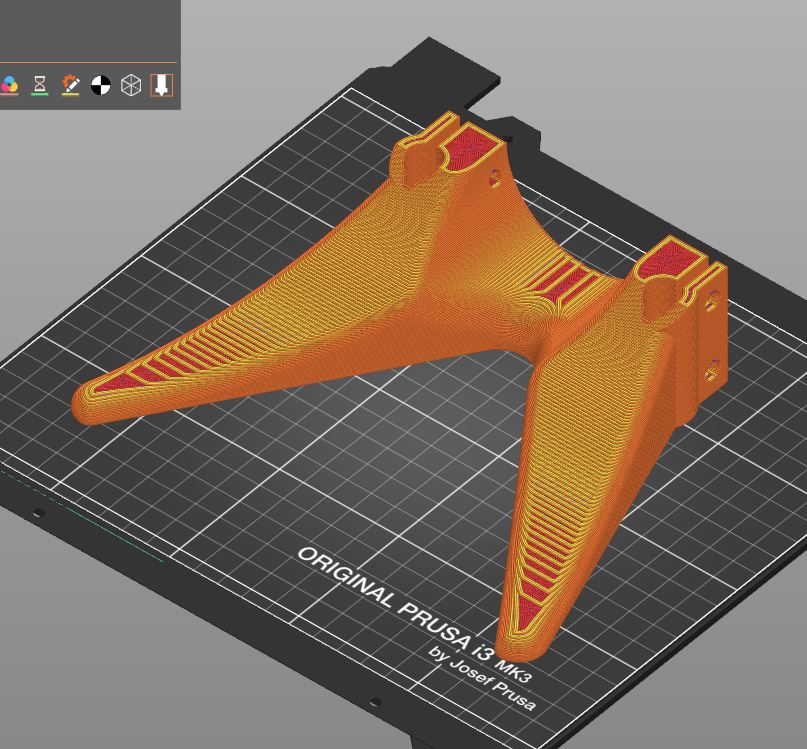 |
 |
The linear rails are held in the split clamps shown below (and for this reason, I'd recommend printing them in PETG.)
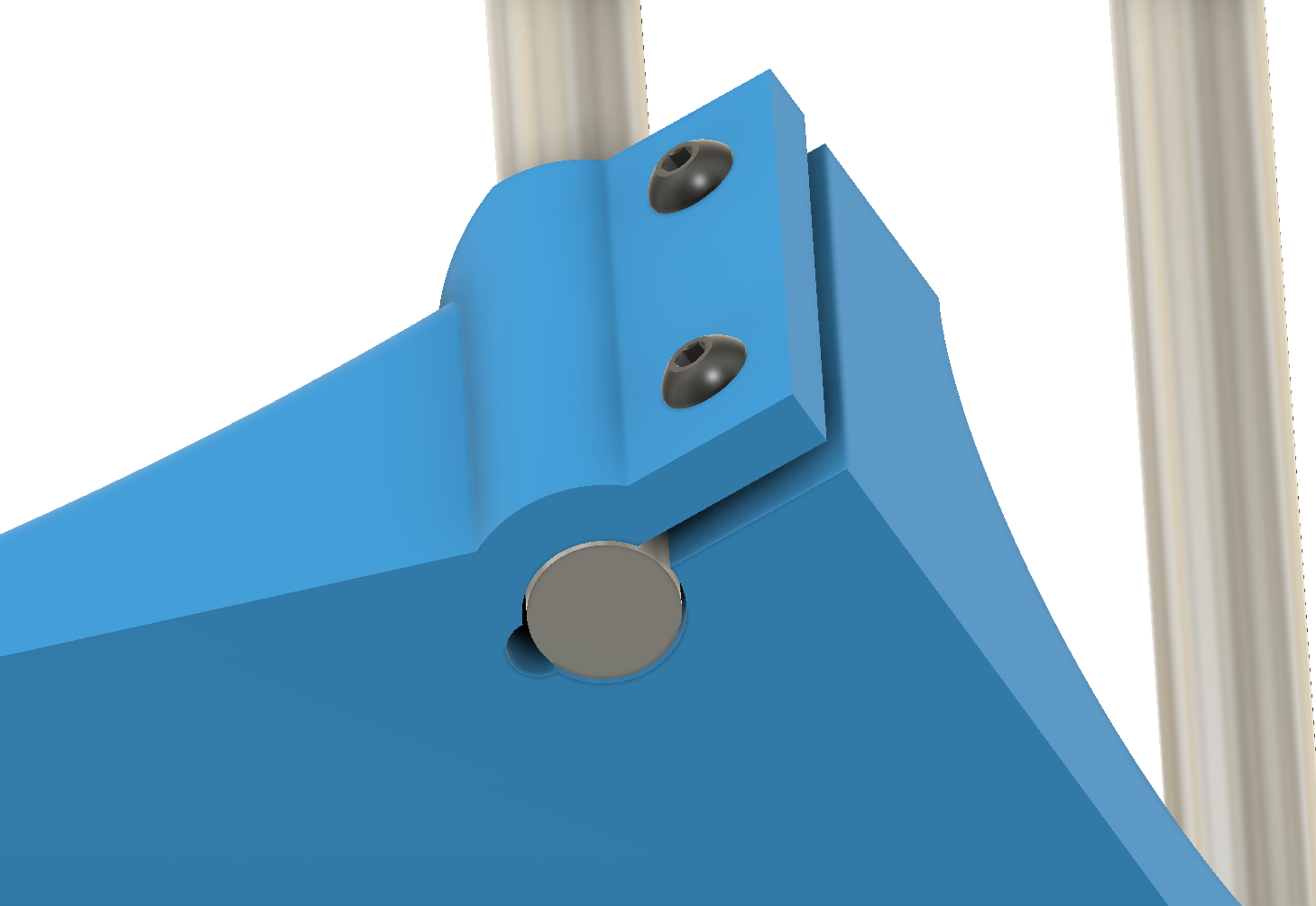
Putting in these heat sets in the Base is a little tricky since the iron needs to go through the clearance hole for the fastener. But as long as you're careful, you shouldn't end up with a messy tip...nobody likes a messy tip.
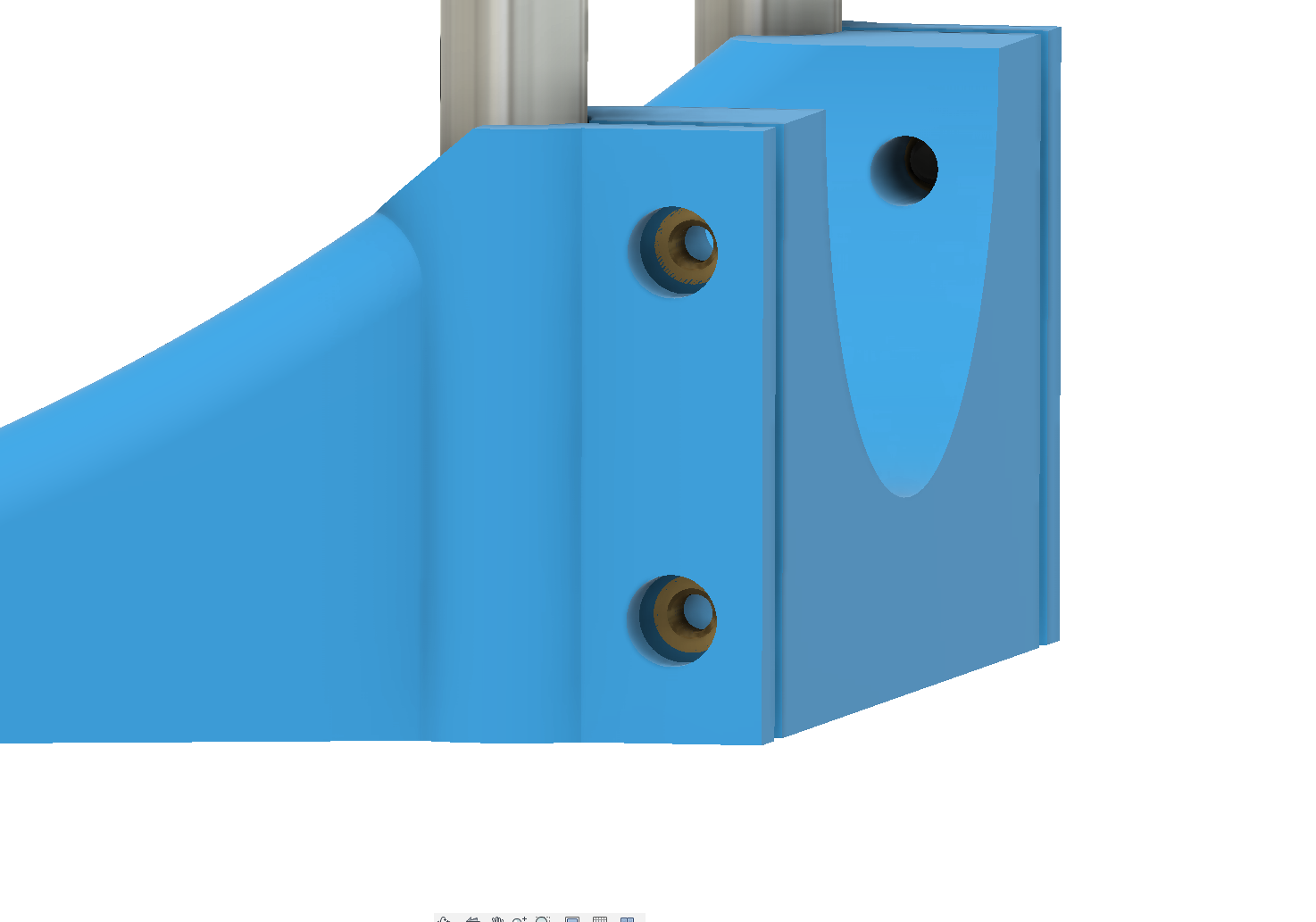
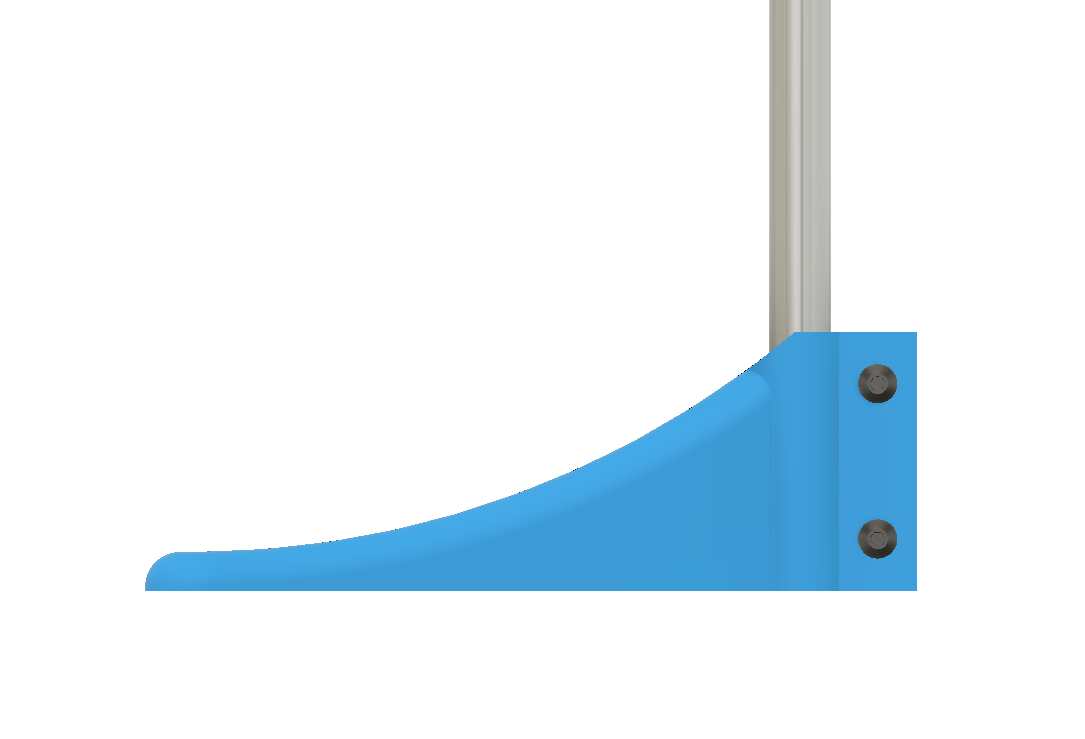 |
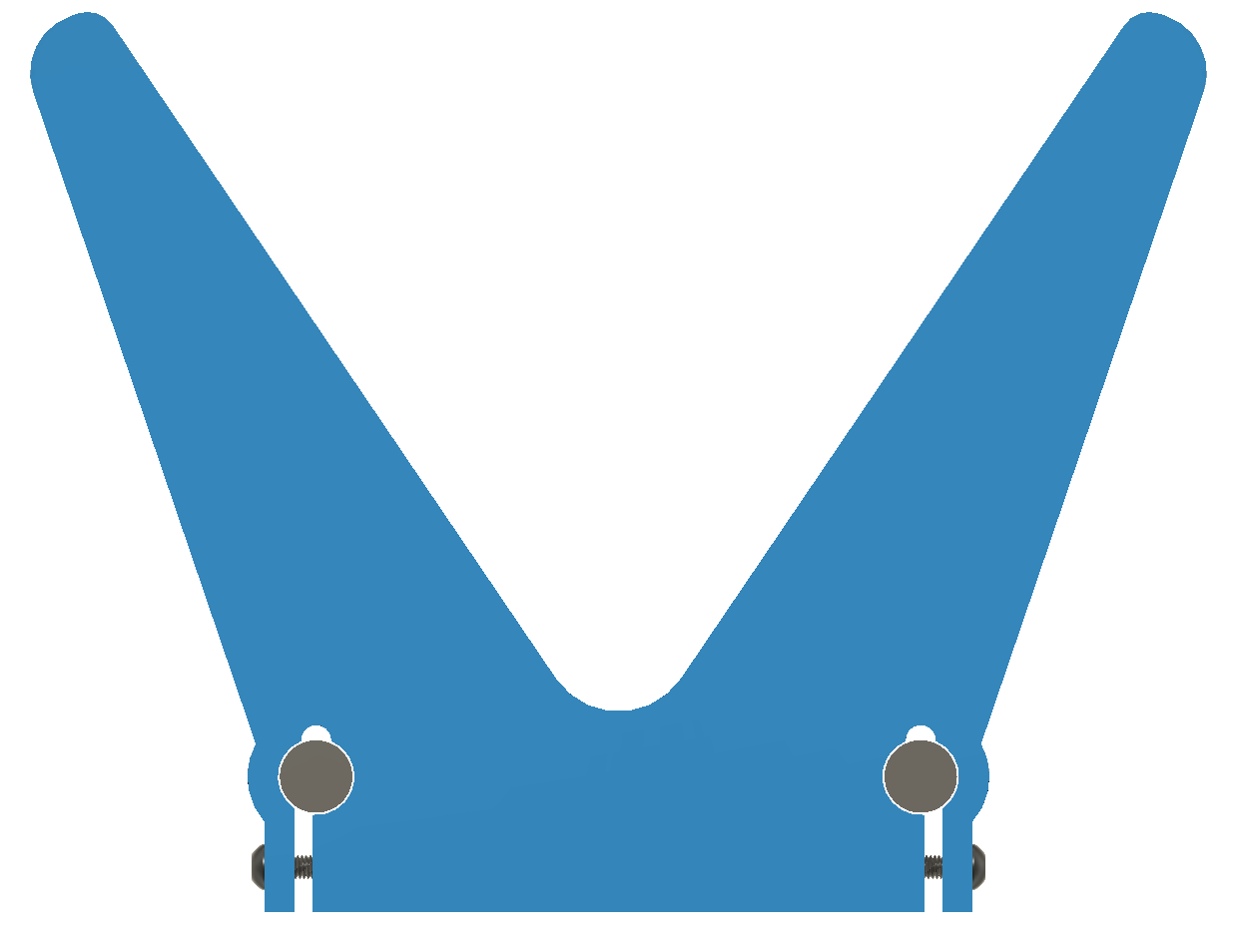 |
On the Carriage side, all of the inserts should be pretty straightforward. I just set it up in the Panavise and went ta town.
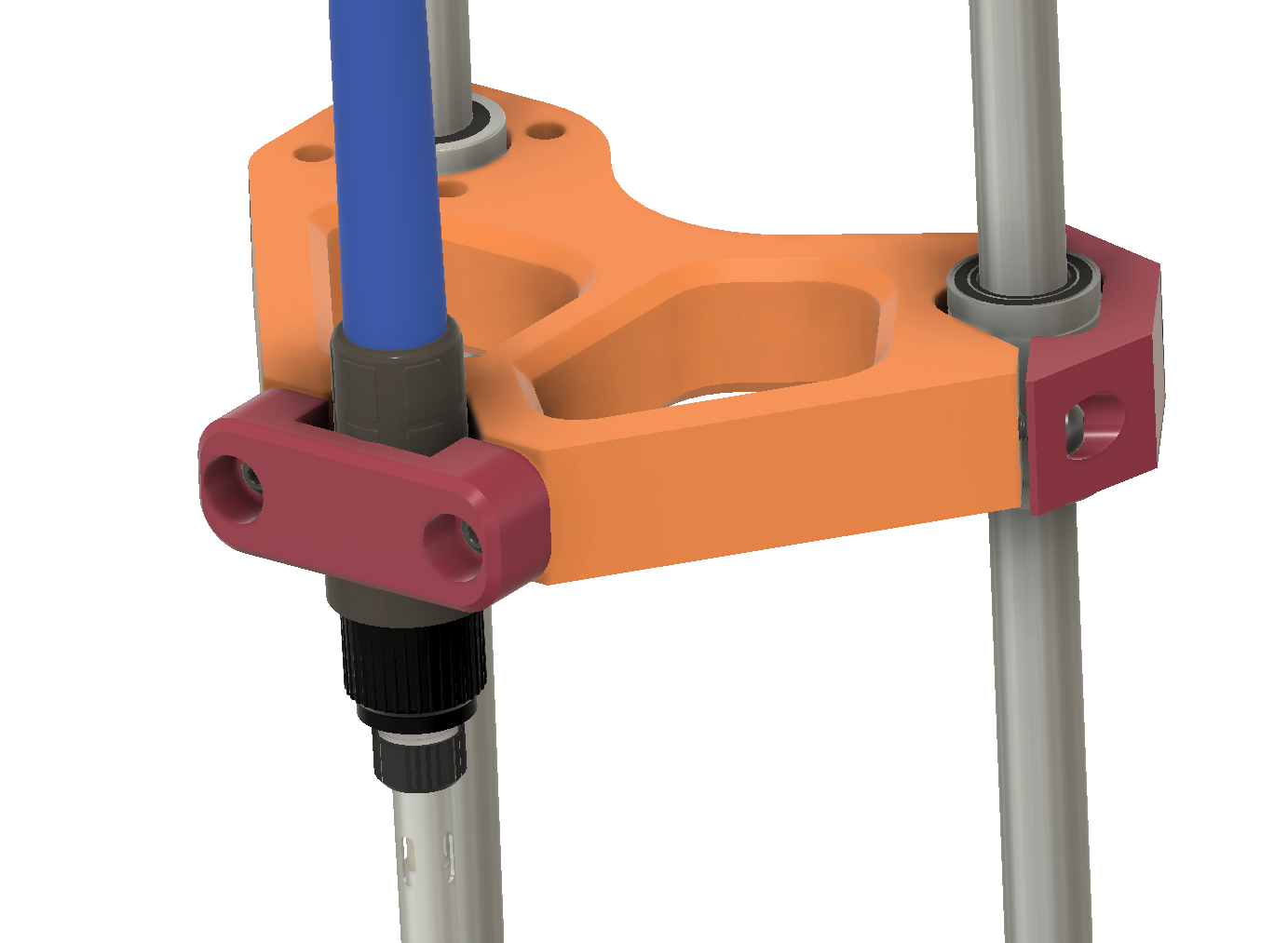
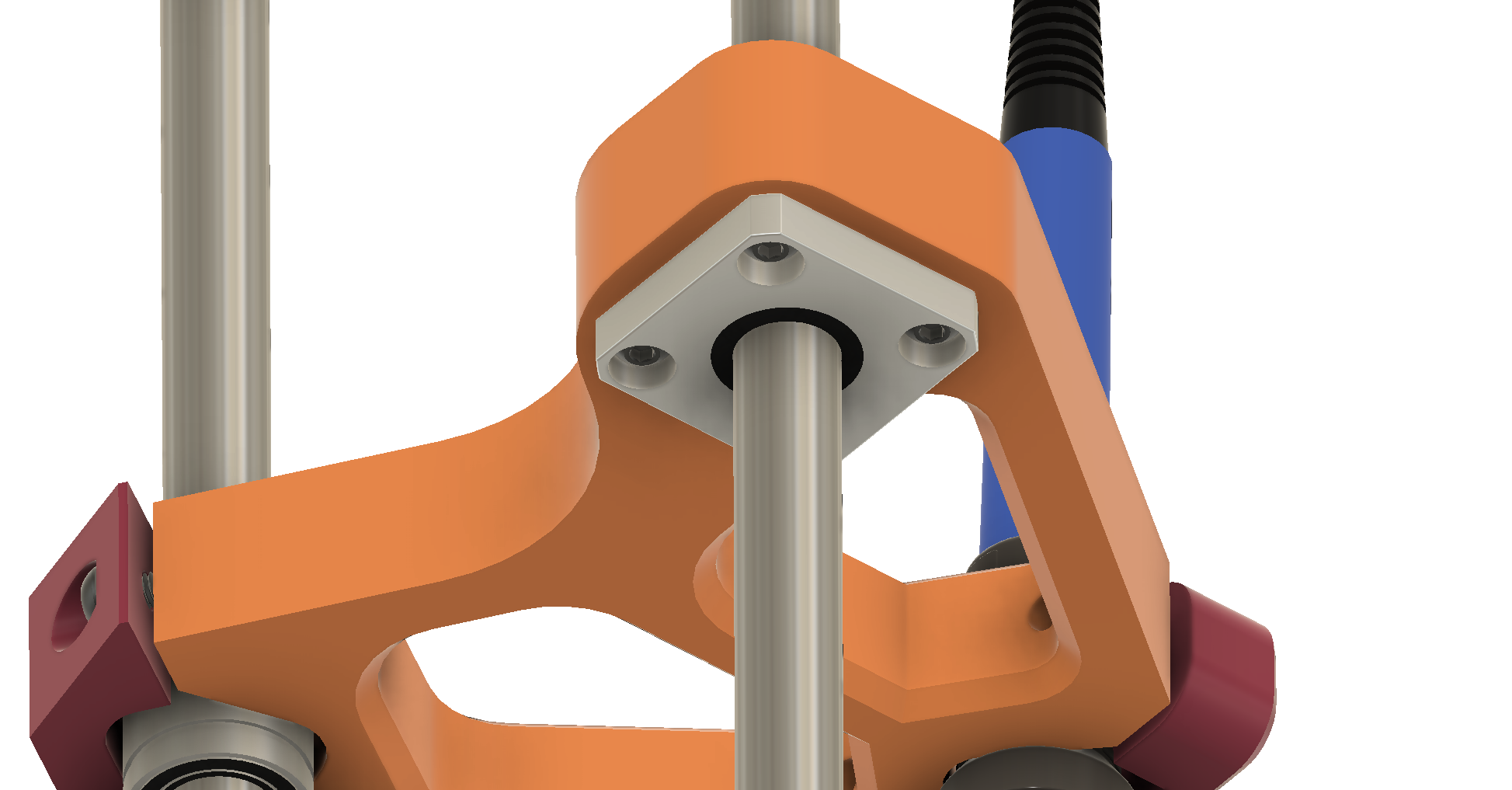 |
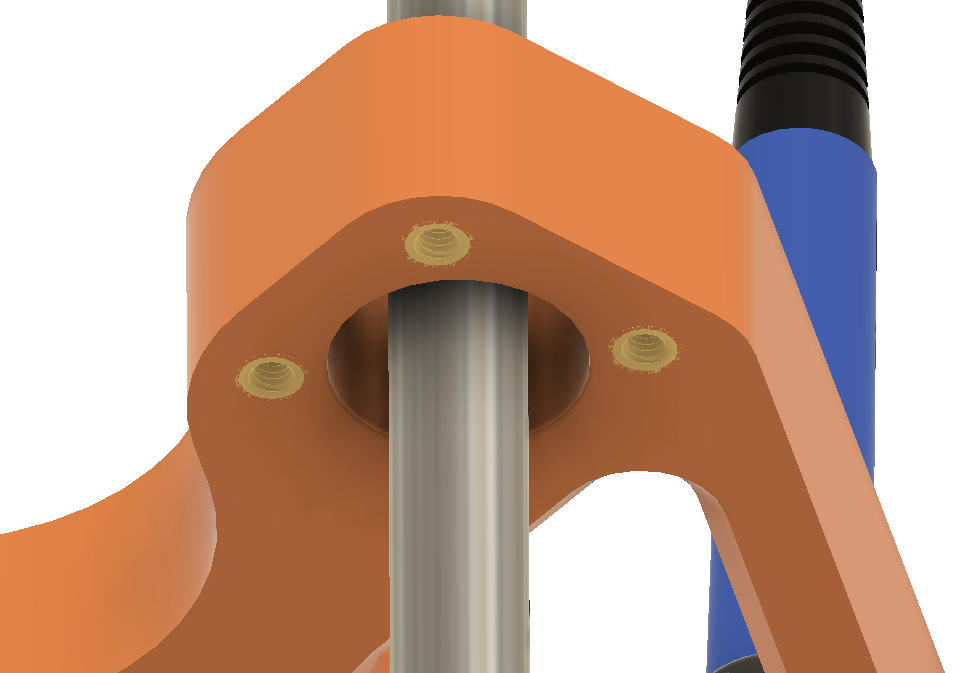 |
 |
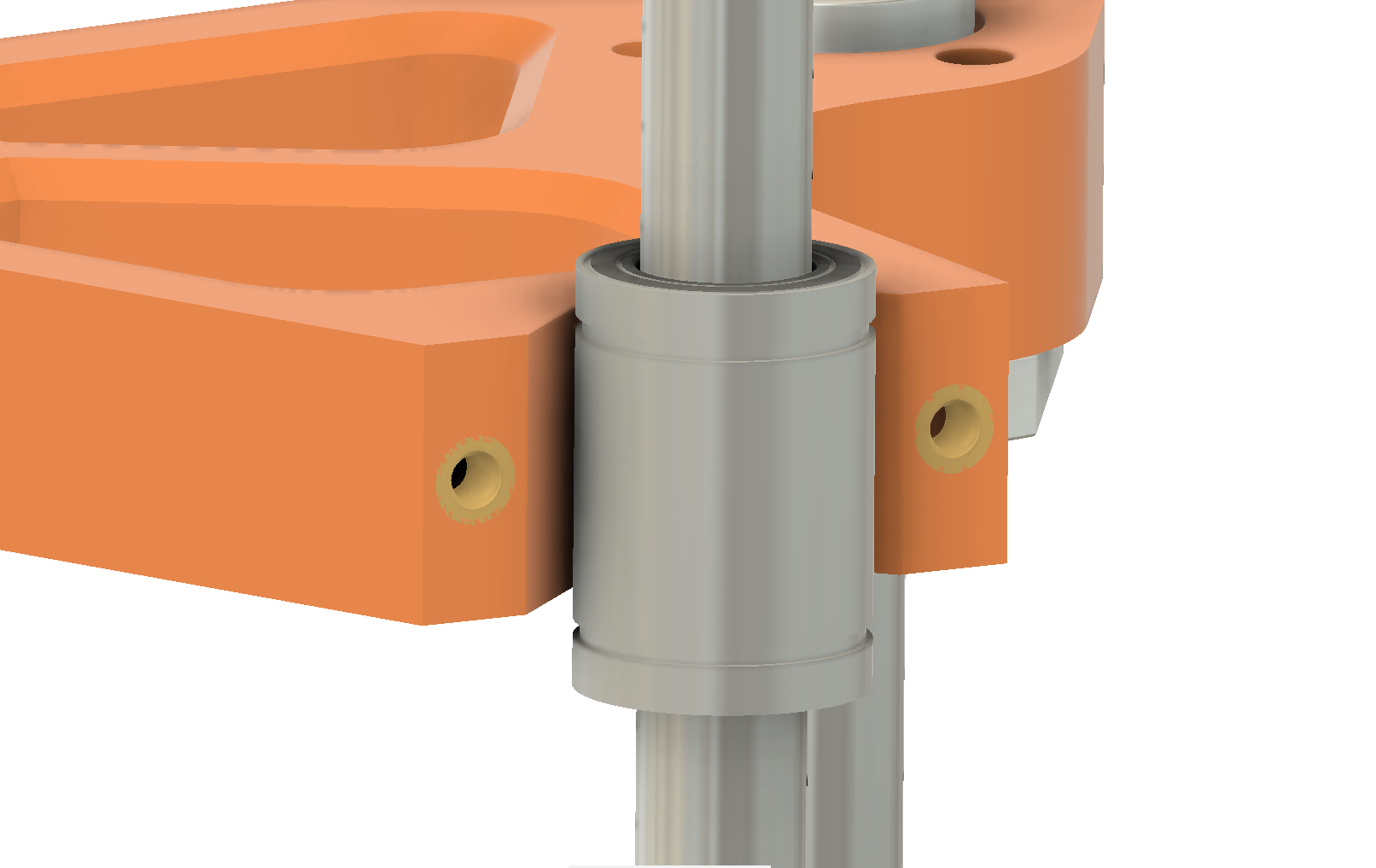 |
- Details
- Parent Category: BubsBuilds Projects
- Category: Tool-related Projects
Assorted stuff aimed at trying to help keep my toolbox drawers a little less chaotic.
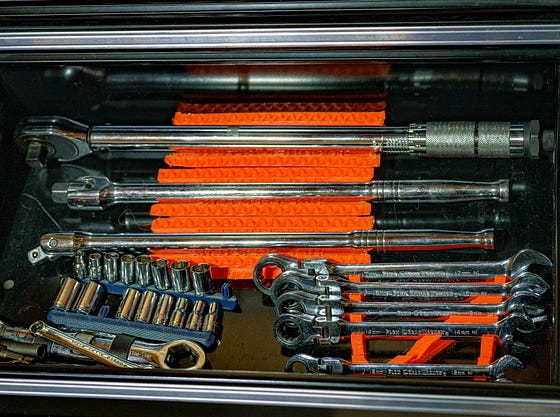
Zip Tie Holder

A sturdy benchtop/desktop organizer, originally intended for ‘standard’ zip tie sizes. But I’ve since printed scaled versions of this for a handful of different desktop organizer needs :) It’s far from fancy, but it gets the job done!
The base is a large flat area, so prepare accordingly for either sticky (PETG, et al) or bendy (ABS, et al) stuff!
Otherwise, it’s a consistent cross-section, straight up. So should be pretty straightforward and safe in any material of your choice. A personal favorite of mine is one I printed with iron-filled PLA. Having the extra weight to it is great for the shop!
Hex Bit Organizer
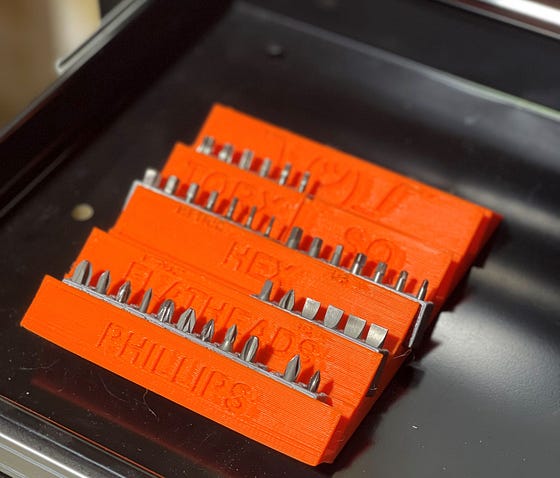
I’ve been pleasantly surprised with this little setup! I think this was the first toolbox organizer build I did with TPU, and that combined with just kind of a swag at the tolerancing on the bit holders to get a snug, but not too snug fit had me 50/50 on whether this would be scrap :) But a few years later and this pic was taken in my toolbox just yesterday, still goin strong and, shockingly, pretty well populated.
The holder is the Orange Overture TPU and I printed the bit holders from their Light Gray PETG. I really like using TPU for anything that sort of ‘interfaces’ the tool to the drawer. It helps keep everything from sliding around (this particular toolbox doesn’t have drawer liners, and apparently I like to do things the more complicated way :) ) and also gives some impact resistance for dropping tools into the box, etc.
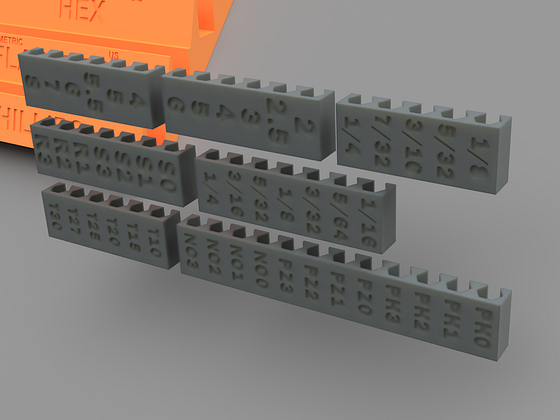
I made holders for the various bits that I have/see, but it’s far from comprehensive. If there are some you’ve got rolling around your drawer that aren’t covered here, I’d be curious to hear what ya got!
Socket Bars
1/4" Drive
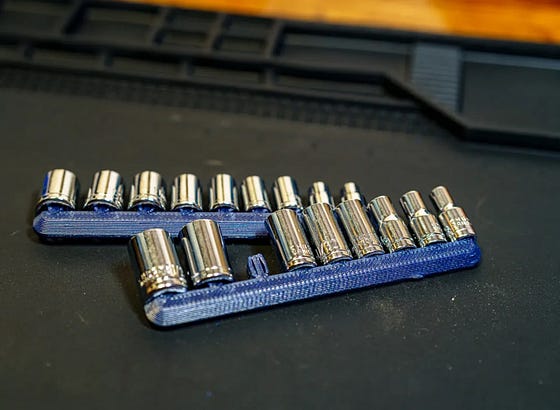
Designed to hold nine(9) — 1/4" drive sockets. I made these specifically to be able to quickly grab these little socket sets and toss them in a travel toolbox, or just around for a project. The little leaf flexures have held up quite well for me printed with this Overture PETG…and it’s so sparkly :) I would stick to something not too stiff, like PETG or ASA. I haven’t tried, but I would suspect PLA might fail on the flexures.
Find it on Printables
3/8" Drive
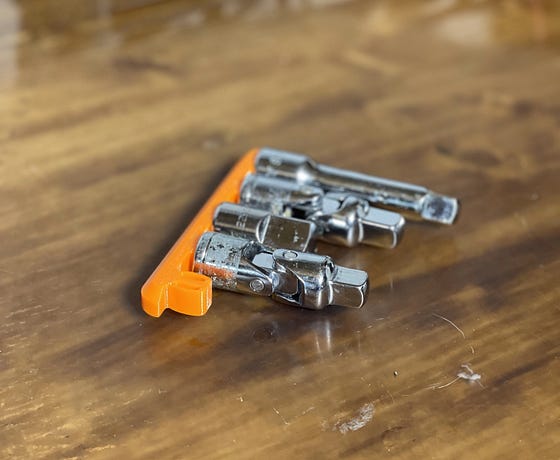
A little socket holder that I mainly use for grouping random/loose sockets in my toolbox and for grabbing small sets of sockets to carry around (hence the ‘pocket socket’ name) when working on something specific. It keeps me from having to carry multiple loose sockets or lug around a full set.
I would NOT recommend printing these in PLA or any other stiff material. I have printed all of mine from PETG and they have held up great. Something like ASA would probably be an even more appropriate choice, especially if you like to see how far away from the box you can land your tools in the drawer :)
Shouldn’t require any supports, brims, or the like. I’ve mainly printed mine with coarse layers (0.3–0.55) on 0.6 and 0.8 nozzles, but it should print fine on pretty much anything under that. Going above that I would just worry about how much the printing path dominates the geometry of the flexures (might make them too thick and cause them to break and/or be difficult to get sockets on).
Find it on Printables
1/2" Drive
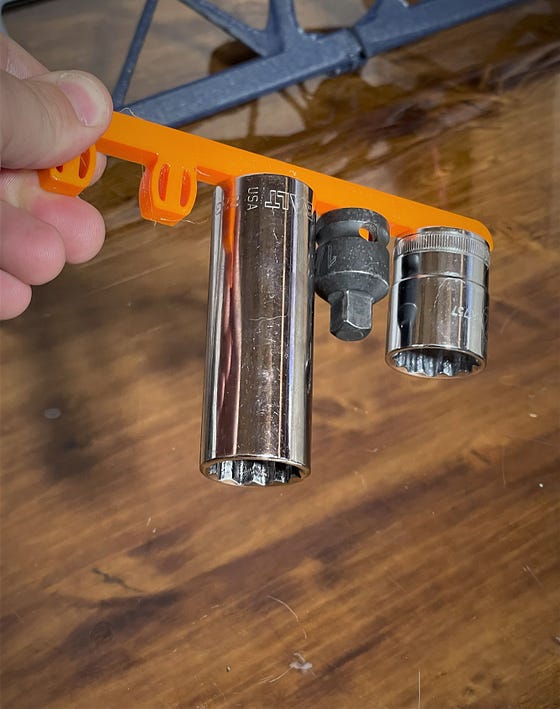
A little socket holder that I mainly use for grouping random/loose sockets in my toolbox and for grabbing small sets of sockets to carry around (hence the ‘pocket socket’ name) when working on something specific. It keeps me from having to carry multiple loose sockets or lug around a full set.
I would NOT recommend printing these in PLA or any other stiff material. I have printed all of mine from PETG and they have held up great. Something like ASA would probably be an even more appropriate choice, especially if you like to see how far away from the box you can land your tools in the drawer :)
Shouldn’t require any supports, brims, or the like. I’ve mainly printed mine with coarse layers (0.3–0.55) on 0.6 and 0.8 nozzles, but it should print fine on pretty much anything under that. Going above that I would just worry about how much the printing path dominates the geometry of the flexures (might make them too thick and cause them to break and/or be difficult to get sockets on).
Box Wrench Holder

Nothin too fancy, just a wrench holder for my box wrenches. I more or less was aiming to recreate the long-lost holder that originally came with the wrench set. As with most of my toolbox organizer parts, I built this one from orange Overture TPU.
Breaker Bar Stand
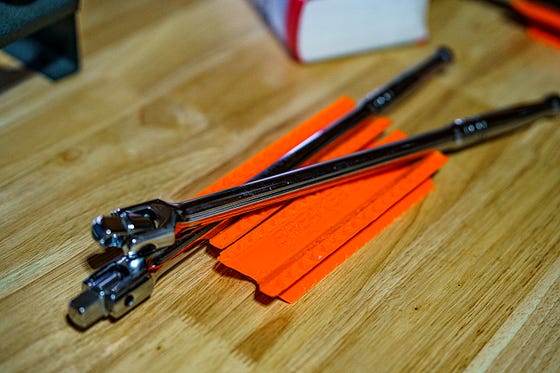
Intended to keep my breaker bars from rolling around and also just to help add some organization for my toolbox. As with all of the other orange stuff shown on this page, I printed these from Overture TPU. The diamond pattern on the top and bottom surfaces was intended to 1) keep the TPU from destroying my build plate, and 2) I was originally going to use this diamond pattern to make things stackable/modular, but haven’t gotten around to building it out any further.
R8 Collet Holder
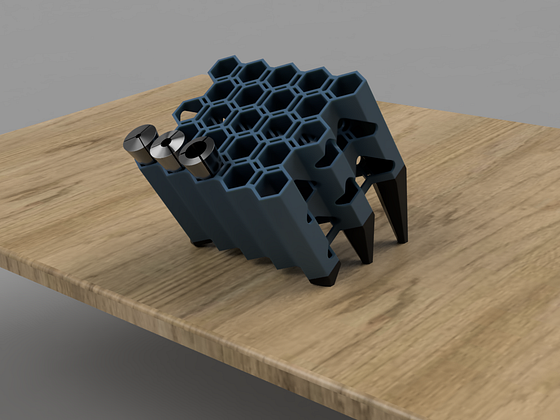
Holds up to 23 R8 Collets. With the feet installed, it holds the collets up at a 30 degree incline. I intended for the feet to be glued in, but in my print (granted, it’s ugly…don’t judge me, I used up some old PETG filament knowing it’s just gonna get beat to hell anyway :) )
Find it on Printables
- *Please note, many of the links contained in my articles are “Affiliate” links through that vendor. Unless specifically otherwise mentioned in the context of the link, these are items that I purchased and used from that same product page for whatever the project (or prospective project) was. I use these Affiliate links to help recoup a little of what I spend on project materials, etc. (if you’d like a sense of scale….in the week that I write this, I have brought in a startling $0.75 :) ).
- Details
- Parent Category: BubsBuilds Projects
- Category: WIP
Subcategories
Assorted (hopefully) "Useful Stuff" Projects Article Count: 12
Like the bucket of assorted fasteners on that bottom shelf, this category is for stuff that I didn't know how to group...oh, and speaking of those fasteners, check out the little sortin fella!
2020 Aluminum Extrusion Hardware
|
Quick Bolt Sorter
|
General Purpose Turntable - Gen1

Games Article Count: 1
Generative Design Projects Article Count: 3
During the good financial decision-making times of Covid lockdowns, etc. I decided it was a good idea to buy a license for the Fusion360 Generative Design extension...Good news, I did finally pay that off :) I had worked around, and been somewhat involved in a handful of Topology Optimization/Generative Design projects through my work, and I've found the tech super interesting for some time. So after the free trial, and feeling like I was just starting to gain some level of competence in Fusion360's tool....I done did it, and bought the year. Ok, now that I'm done justifying that to myself...I mean you...
<engineering/design> What I really like about Generative Design is that it forces the designer to think about the thing they are trying to design from it's core requirements: Forces, Interfaces, and Keep Outs. I think it's far from perfect, especially given the still very primitive Design For Manufacture capabilities these tools have (among other shortcomings, but this one is certainly a big one to me.)
<precision engineering> One last also (for now), but ALSO, what I find exciting about these tools from a precision engineering perspective, is that the above-mentioned focus on forces and interfaces, these tools are extremely well-suited to kinematic/exact constraint designs! I think every one of the Generative Design projects below features at least some aspects of kinematic constraint (I say, "I think" because I may or may not be writing this before I go through my files and remind myself what all I actually made vs what I just thought about making ¯\_(ツ)_/¯ )
JFS Projects Article Count: 14
AgTech (aka finding a way to complicate and digitize gardening) Projects Article Count: 12
Hydration and Hydroponics Projects Article Count: 8
Peristaltic Pumpin Article Count: 4
A lot of projects I work on/have worked on seem to involve the controlled movement of fluids. Below is a bit of a history of my builds involving attempts at obtaining this controlled movement for incompressible fluids. I haven’t done much myself with making custom solutions for the compressible stuff, but if you’re interested in such things, I thoroughly enjoy Major Hardware’s “Fan Showdown” series :)
This article/section is by no means intended as a thorough overview on the design and operation of pumps. While I will try to give some overview on operating principles and design considerations as I go, this is mainly just going to be a wander through my personal builds and experiences.
Peristaltic Pumps
What is a peristaltic pump?
I’m sure there are innumerable sources online for (much better) detailed discussions of the workings of peristaltic pumps. So I’m just going to hit the highlights, and I’ll try to remember to find some promising links and add them below, should a deep dive seem intriguing to ya.
Basic Operation:
The fluid being pumped is carried into the pump in a compliant tubing. This tube is routed around some portion of a circular/cylindrical path around the axis of the pump and then exits the pump. This is one interesting/attractive aspect of peristaltic pumps, the fluid never has to leave the tube that it is in, making these pumps well-suited to situations where contamination and/or leaks are highly undesirable. The housing that features the cylindrical wall that the tubing is being routed along can be considered the Stator, and that is generally the nomenclature that I tend to use.

So if there’s a Stator, there must be a Rotor…? Yup, the rotor includes some set of features that extend out to some defined gap between this feature and the Stator wall. These features, which in many peristaltic pumps are rolling element bearings, pinch the tubing to the point of sealing (ideally) the tube. As the rotor turns, this contact point proceeds around the circumference. Because the pinched point of the tube is sealed, the volume of fluid in the tube ‘ahead’ of the pinch point are, as a result, pushed forward. So, keep rotating, keep pushing….pretty much as simple as that!
Pros:
- Positive Displacement Pump
- Because the pinch point is (ideally) fully sealing the tubing, the amount of fluid moved is directly proportional to the movement of the pump. This makes them very good choices for things like dosing pumps or other applications where the desired volume of fluid to be moved needs to be deterministic.
- This is a large driver for my initial interest in using peristaltic pumps. Their deterministic flow is/was very attractive for my plant growth experiments. They can give very repeatable watering volumes and nutrient concentrations.
- Fluid Isolation
- Because the fluid never leaves the tubing, these pumps can be suitable for moving hazardous materials. For example, I have been using a peristaltic pump for transferring 99% IPA
- Relatively Simple Construction
- Because the fluid does not have to be sealed within the pump, these pumps lend themselves well to DIY builds. No shaft seals, gaskets, etc. or complex (at least to do well) impeller design needed.
- Self-priming and Head height
- If well-sealed, these pumps are capable of self-priming (and even pumping air) and of achieving pretty impressive head heights (the measure of how high above the pump it can pump a column of water)
Cons:
- High drive torque
- Because of the preloading needed against the tubing, and the rolling friction, even with good rolling elements (more below on this), it can be quite easy to end up with designs that require quite a lot of drive toque.
- Tubing wear
- With the relatively large deformation and high number of cycles, the tubing will eventually fail, either due to material wear, fatigue cracking, or who knows what else. Because this failure mode can cause fluids leaking into your pump not designed to experience this fluid, this failure can potentially be quite problematic. So the use of high-quality tubing material and a plan for periodic maintenance, are worthwhile.
Test Build 1
A couple of years back, I had a concept for an in-line-mixing hydroponics system. The idea being that the supplies to the system would be just pure water and nutrient concentrates, and a series of pumps and valves would allow precise dosing mixes to each target plant in a system (I refer to this concept as Rail Yard Hydro, since it moves the fluids around the tubing network quite like rail cars are moved around a rail system. I’m planning to add a separate page diving into that one a bit deeper since it is the design scheme I am using in my current projects.)
Well, to facilitate this plan, I wanted to find an option for a dosing pump that I could integrate in to my control system (aka Arduinos and Raspberry Pi’s :)). Unfortunately, I quickly found that a servo-driven peristaltic pump could easily set me back north of $100….so I set out to spend many multiples of that making my own!
Actually, when I saw the pricing, I decided I should see if I could make myself a cheapo, manual version that I could use to just test out some basic questions on the Rail Hydro idea (mainly verifying that I could induce good material mixing in-line and that there was no cross-contamination between fluid reservoirs.) And so, ‘twas this endeavor that resulted in the pump I’m apparently referring to as “Test Build 1”
Design Objectives:
- Be a peristaltic pump
- Provide a full seal (at 100mm head)
- Be hand-cranked
- Not require any parts that would have to be ordered (I’m impatient)
The Build
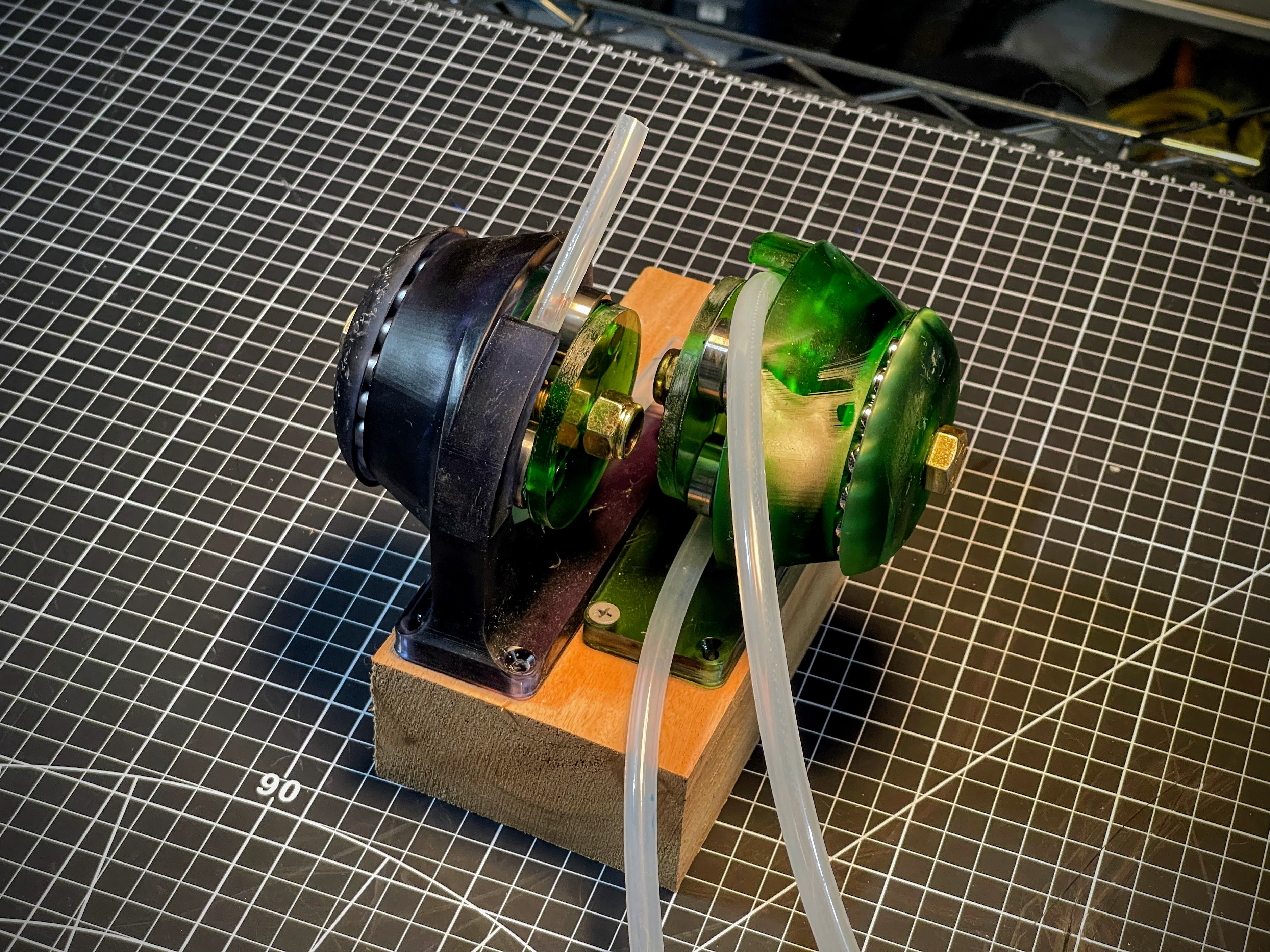
She ain't pretty (especially after a good while of getting knocked around), but the pic above shows the dual pump setup I rigged up for my testing needs. I was VERY pleasantly surprised that, other than a tweak to the hand wheel, these things worked pretty damn well!

I decided upfront that I was going to go with a resin printed build, because I thought the high stiffness and good surface finish throughout the 'pinch region' would give me a better chance. Since I was already going to have the good surface roughness, I might as well also integrate the main bearing into the printed parts.
In the image of the model, below, the Stator is the part shown in green, and the Rotor is shown in blue(ish.) Riding on the rotor are roller skate bearings to provide the contact with the tube. Race 1 has v-grooves on both sides of the race, providing the main constraint for locating the rotor, and Race 2 has a v-groove on the Stator, but only a single plane of contact on the Rotor side. This keeps from over-constraining the bearing.
 |
 |
The absurdly overkill bolt running through the center is a real showcase of "using what I had on hand" :) in that these were the only bolt/nut sets I had on hand with the length I was looking for.

